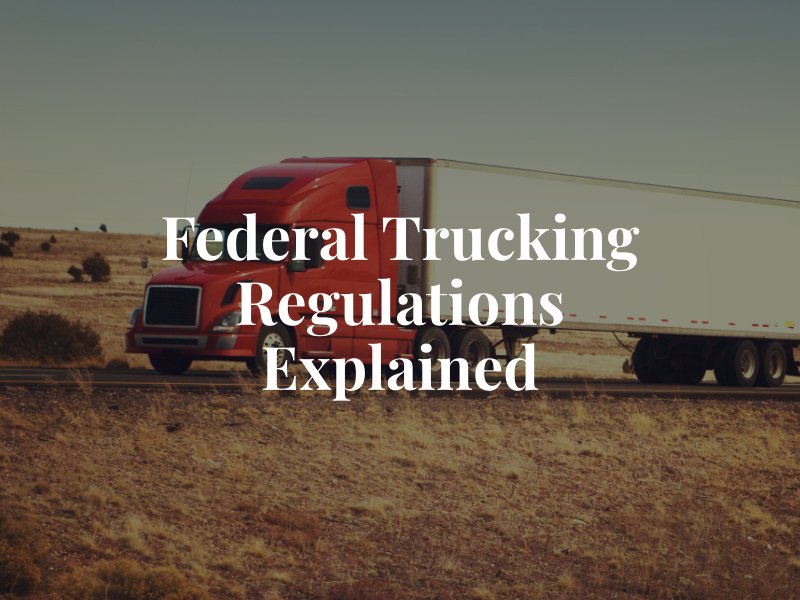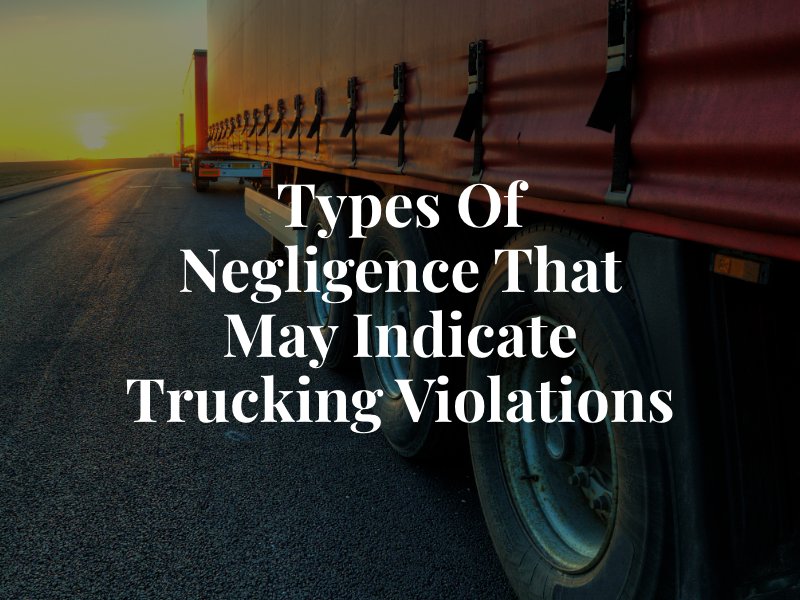The Federal Motor Carrier Safety Administration (FMCSA) regulations play a major role in keeping our highways safe by setting standards for truck drivers and the companies that employ them. These rules are designed to reduce accidents, ensure vehicles are properly maintained, and guarantee that drivers are qualified and well-rested.
When a truck accident occurs, FMCSA regulations often become a primary part of truck accident claims because they help establish whether the parties involved followed set safety standards. For those injured in truck accidents, understanding these rules is essential when building a case against trucking companies, drivers, or insurers.

Important Federal Trucking Regulations To Know About
Commercial trucking is a highly regulated industry to ensure that drivers, vehicles, and carriers operate safely on the road. Below are some of the most important federal trucking regulations to be aware of.
Your Case Will Get
The Attention It Deserves

Driver Qualifications and Licensing
Proper licensing and qualifications are essential for truck drivers to legally and safely operate commercial motor vehicles (CMVs). These regulations ensure drivers meet physical, educational, and legal requirements.
- Commercial Driver’s License (CDL): To operate a CMV, drivers must obtain a CDL by meeting specific age, knowledge, and skills standards. Drivers also have to pass tests that evaluate their understanding of vehicle operations and traffic laws.
- Medical Certification: Drivers are required to undergo regular medical evaluations to confirm they’re medically fit to drive. This includes ensuring they don’t have conditions that could impair their ability to safely handle a large vehicle.
- Disqualifications: Certain offenses can lead to a driver losing their CDL. Common reasons include driving under the influence, drug violations, or repeated traffic offenses such as reckless driving.
Hours of Service (HOS) Regulations
HOS rules are in place to combat driver fatigue, which is a significant factor in many trucking accidents. These rules dictate how long drivers can operate without rest.
- Rest Periods: Drivers must take regular rest breaks, including at least a 10-hour off-duty period after driving for extended shifts. These breaks allow drivers to recover and stay alert while on the road.
- 14-Hour Driving Limit: Drivers are restricted to a 14-hour on-duty window each day, with only 11 of those hours allowed for driving. The remaining time must include non-driving tasks or rest.
- Driving After Fatigue: Fatigued driving greatly increases the risk of accidents. HOS rules are designed to limit how long drivers can stay on the road so they don’t endanger themselves or others due to exhaustion.


Vehicle Maintenance and Inspection
Vehicle maintenance regulations ensure that trucks remain safe to operate and minimize the risk of mechanical failures while driving.
- Routine Inspections: Commercial trucks must undergo regular inspections, often daily. Drivers and carriers are responsible for checking important systems like brakes, tires, and lights to ensure they are functioning properly.
General. Every motor carrier and intermodal equipment provider must systematically inspect, repair, and maintain, or cause to be systematically inspected, repaired, and maintained, all motor vehicles and intermodal equipment subject to its control.
- Maintenance Logs: Trucking companies must keep accurate records of vehicle maintenance and repairs. These logs can help identify patterns of neglect, prevent accidents, and even serve as evidence in legal claims.
- Out-of-Service Violations: Trucks that fail inspections may be deemed unsafe and taken off the road until repairs are made. These violations can lead to penalties for the carrier and delays in operations.

Electronic Logging Devices (ELDs)
ELDs have become a standard tool for documenting driver work hours, helping ensure compliance with HOS rules.
- Tracking Driver Hours: ELDs automatically record driving time, rest periods, and on-duty hours. This eliminates the possibility of falsified records and helps monitor HOS compliance.
- Impact on Accident Claims: ELD data can be a valuable resource in legal cases. For example, if a driver caused an accident due to fatigue, ELD records may provide evidence that they exceeded their driving limits.
Drug and Alcohol Testing
Maintaining sobriety behind the wheel is a fundamental part of safe trucking. These regulations aim to keep drivers who may pose a danger off the road.
- Pre-employment and Random Testing: Commercial drivers are required to pass drug and alcohol tests before they are hired, as well as undergo random testing during employment. Post-accident testing is also required in specific situations.
- Impact of Substance Abuse: Drivers who fail these tests can face disqualification, fines, or termination. The same is true for carriers that do not enforce proper testing procedures, which can lead to both legal and financial consequences.
These regulations play a significant role in minimizing accidents and ensuring accountability in the trucking industry. For victims of truck-related accidents, understanding these rules can help identify potential negligence.

Proving Negligence in Trucking Accident Claims
Proving negligence in truck accident claims often involves showing that trucking violations played a role in causing the incident.
Violations of FMCSA Regulations
Trucking companies and drivers are required to adhere to strict guidelines, such as driver licensing, medical certifications, and hours-of-service rules. Evidence showing that a driver violated certain regulations can show negligence.
For example, a driver exceeding the allowed driving hours or failing to maintain proper licensing can support a negligence claim. Additionally, violations of mandatory drug and alcohol testing protocols offer further proof that the company or driver did not follow established safety standards.
Driver Behavior and Operational Errors
Negligence can also be demonstrated through actions like speeding, distracted driving, or ignoring traffic signals while operating a large vehicle. When accident reports or electronic logging devices reveal that a driver was fatigued or distracted, these issues become crucial evidence in your case. This type of behavior directly impacts the accident and supports claims of negligence.
Maintenance and Inspection Violations
Regular inspections and maintenance of commercial vehicles are required by law to ensure safety. Inadequate maintenance or failure to repair known issues can be a major factor in proving that the truck was not roadworthy at the time of the accident. Documentation of missed inspections or deferred repairs can be used to show that negligence on the part of the trucking company contributed to the incident.
By highlighting how specific trucking violations and operational errors led to the accident, you build a stronger foundation for proving negligence and pursuing fair compensation.







